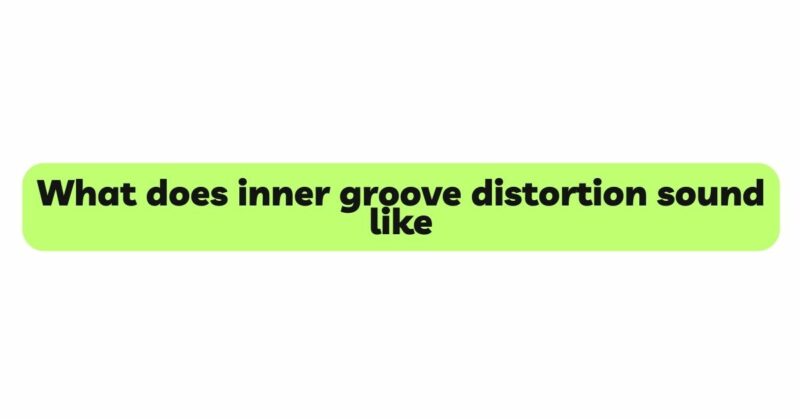Vinyl records, with their analog charm and distinctive sound, have long captivated audiophiles and music enthusiasts. However, the experience of playing a vinyl record isn’t always free from imperfections. Inner groove distortion is one such issue that can affect the playback quality of vinyl records, particularly towards the end of each side. This article aims to delve into the phenomenon of inner groove distortion, exploring its causes, characteristics, and the auditory effects it imparts to the music.
- Vinyl Records and Their Unique Sound
Vinyl records have retained their appeal over the decades due to the warm and organic sound they produce. They offer a tactile experience, from carefully selecting an album to gently placing the stylus on the spinning platter.
- Inner Groove Distortion: An Unwanted Intruder
Inner groove distortion is a challenge that arises due to the limitations of the vinyl medium. As the stylus moves closer to the center of the record, the physical space available for the grooves diminishes, leading to a decrease in sound quality.
- Causes of Inner Groove Distortion
Inner groove distortion can be attributed to several factors, including:
a. Reduced Groove Length: The inner grooves are shorter, which affects the ability to reproduce low frequencies accurately.
b. Tracking Force Variation: As the stylus moves towards the center, the tracking force can become uneven, leading to tracking errors and distortion.
c. Angular Error: The stylus angle becomes less ideal as it nears the center, causing increased friction and inaccuracies.
d. Groove Density: The inner grooves are packed more closely, resulting in reduced dynamic range and clarity.
- Auditory Effects of Inner Groove Distortion
Inner groove distortion can manifest in various ways, affecting the auditory experience:
a. Loss of Bass: One of the most noticeable effects is a loss of bass frequencies, leading to thin and weak sound.
b. High-Frequency Distortion: Inner groove distortion can introduce high-frequency distortion, causing harshness and sibilance in vocals and instruments.
c. Muffled Sound: The overall sound can become muffled and less detailed due to the limitations of the inner grooves.
d. Reduced Dynamics: Dynamic range is compromised, resulting in less contrast between soft and loud passages.
e. Sibilance: Sibilant sounds (such as “s” and “sh” in vocals) can become more pronounced and sibilance distortion can occur.
- Managing Inner Groove Distortion
While inner groove distortion is an inherent limitation of vinyl records, there are steps that audiophiles can take to mitigate its effects:
a. Optimal Tracking Force: Calibrating the tracking force accurately for each record can minimize tracking errors and distortion.
b. Stylus Shape: Using a stylus with a suitable shape can improve tracking in the inner grooves.
c. Cartridge Alignment: Ensuring proper cartridge alignment helps maintain consistent tracking across the record surface.
d. Record Flipping: Flipping the record before the inner grooves can help balance wear and reduce distortion.
- Appreciating Imperfections: A Matter of Taste
While inner groove distortion is considered a limitation, some audiophiles argue that it’s part of the vinyl experience and adds character to the music.
- Listening to Inner Groove Distortion
To experience inner groove distortion firsthand, one can listen to a vinyl record and pay close attention to the change in sound quality as the stylus reaches the inner grooves.
- Digital Alternatives and Technological Advances
Digital formats and advancements in mastering techniques have allowed for greater control over the reproduction of music without the limitations of vinyl.
- Conclusion
Inner groove distortion is a sonic imperfection that reminds us of the physical limitations of vinyl records. While it can affect the playback quality of records, it also adds a unique character to the vinyl experience. Embracing the imperfections of vinyl records is a testament to the medium’s analog nature, and the appreciation for inner groove distortion is ultimately a matter of individual taste. Whether enjoying the warmth and charm of vinyl or embracing the precision of digital formats, the world of music offers diverse ways to experience sound.


